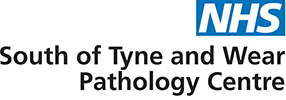Myositis Screen (Mi-2alpha, Mi-2beta, TIF1-gamma, MDA5, NXP2, SAE1, Ku, PM-Scl100, PM-Scl75, Jo-1, SRP, PL-7, PL-12, EJ, OJ, Ro-52)
Code:
MYO
Sample Type:
2mL Serum (Gel 5mL Yellow tube
Ref Ranges/Units:
Positive or Negative
A normal result is negative
Turnaround:
10-14 days
Frequency of Analysis: 2 weeks
Special Precautions/Comments:
Method: Immunoblotting against Mi-2alpha, Mi-2beta, TIF1-gamma, MDA5, NXP2, SAE1, Ku, PM-Scl100, PM-Scl75, Jo-1, SRP, PL-7, PL-12, EJ, OJ, Ro-52. Calibration: Manufacturer has used sera from known positive patients to confirm antigen reactivity. EQA scheme: Myositis Associated Antibodies IQC: In-house preparation and test band on each immunoblot.
Interferences: None known
Additional Information:
Indication: Myositis, Inflammatory Myopathies, including Dermatomyositis (DM), Juvenile Myositis (JM/JDM) or Polymyositis (PM) and Inclusion Body Myositis (IBM)
Background: Myositis is rare and antibodies are found in about half of patients [5]. Mi-2 antibodies are typically found in patients with steroid responsive dermatomyositis. They are rare in polymyositis. Mi-2 antibodies recognise nuclear helicase and homogenous staining on Hep2 slides is usually seen. Mi-2 antibodies are invariably of high titre and show no variation during the course of the disease or treatment. TIF-gamma (transcription intermediary factor 1)antibodies may be observed patients with cancer associated myopathy, particularly dermatomyositis. MDA5 antibodies can be detected in 13-26% of dermatomyositis cases. They are highly specific for amyopathic dermatomyositis or dermatomyositis with interstitial lung disease. Antibodies to NXP2 may be associated with juvenile polymyositis and dermatomyositis. In adults the disease may be carcinoma associated (breast, uterine or pancreatic carcinoma). SAE1 antibodies are markers for dermatomyositis and for dermatomyositis associated with interstitial lung disease. Antibodies to PM-Scl75 and PM-Scl100 antigen are found in 50-70% of patients with the polymyositis/scleroderma overlap syndrome. PM-Scl75 is seen in 8% of patients with myositis and 3% of patients with systemic sclerosis but 25% of patients with scleroderma/myositis overlap syndrome [3]. PM-Scl100 is not as closely associated with systemic sclerosis as PM-Scl75. Strong nucleolar staining with weak, fine speckled, nucleoplasmic staining can be seen on Hep2 immunofluorescence. Ku antibodies are seen in a variety of diseases including systemic lupus erythematosus, mixed connective tissue disease, scleroderma and the polymyositis/scleroderma overlap syndrome [3]. They are also seen in patients with pulmonary hypertension. They show fine speckled nuclear and nucleolar staining on Hep2 immunofluorescence and are of little diagnostic value. Jo-1 (Histidyl tRNA synthetase) antibodies are found in 20-40% of patients with aggressive polymyositis, usually in association with interstitial lung disease and arthralgia [2]. Whilst the majority of Jo-1 antibodies will demonstrate a fine granular cytoplasmic pattern on IIF with Hep 2 cell substrate, up to 40% may be IIF negative [3]. PL-7 (Threonyl tRNA synthetase ) and PL-12 (Alanyl tRNA synthetase) belong to the same family of aminoacyl-tRNA synthetases (ARS) as Jo-1 [1]. Antibodies against ARS are associated with polymyositis and dermatomyositis, they are also seen in anti-synthetase syndrome (ASS) recognized as a spectrum of myositis, interstitial pneumonia, non-erosive arthritis, fever and Raynaud’s phenomena [1]. PL-12 may be associated with lung disease in the absence of clinically apparent myositis [2]. Anti-Ro52 are the most common ENA specificity amongst autoimmune diseases. They can be seen in Sjögren’s syndrome, SLE, cutaneous lupus erythematosus, neonatal lupus and primary biliary cirrhosis [4]. Signal recognition peptide (SRP) antibodies can be found in approximately 5% of polymyositis and dermatomyositis cases. They are also markers for necrotising myopathy which shows similar skin changes to dermatomyositis but has more acute symptoms including muscle pain/weakness and interstitial lung disease [1,6]. EJ (glycyl) and OJ (Isoleucyl) are markers for polymyositis and may be found in interstitial lung fibrosis, in overlap syndrome, arthritis and Raynaud’s syndrome [1]. EJ may also be observed in SLE
References: Gunawardena H, Betteridge ZE, McHugh NJ. Myositis-specific autoantibodies: their clinical and pathogenic significance in disease expression. Rheumatology. 2009. 48(6):607-612. [Ref 1] Betteridge Z, et al. Anti-synthetase syndrome: a new autoantibody to phenylalanyl transfer RNA synthetase (anti-Zo) associated with polymyositis and interstitial pneumonia. Rheumatology. 2007. 46(6):1005-1008. [Ref 2] PRU Handbook of Autoimmunity. 2007. 4th Edition. [Ref 3] Franceschini F, Cavazzana I. Anti-Ro/SSA and La/SSB antibodies. Autoimmunity. 2005. 38(1):55-63. [Ref 4] Hengstman GJD, Van Engelen BGM, Van Venrooij WJ. Myositis specific autoantibodies: changing insights in pathophysiology. Current Opinion in Rheumatology. 2004. 16(6):692-699. [Ref 5] Miller T, et al. Myopathy with antibodies to the signal recognition particle: clinical and pathological features. J Neurol Neurosurg Psychiatry. 2002. 73:420–428. [Ref 6]
See Also: ANA
Telephone Gateshead Lab: 0191.4456499 Option 4, Option 1


